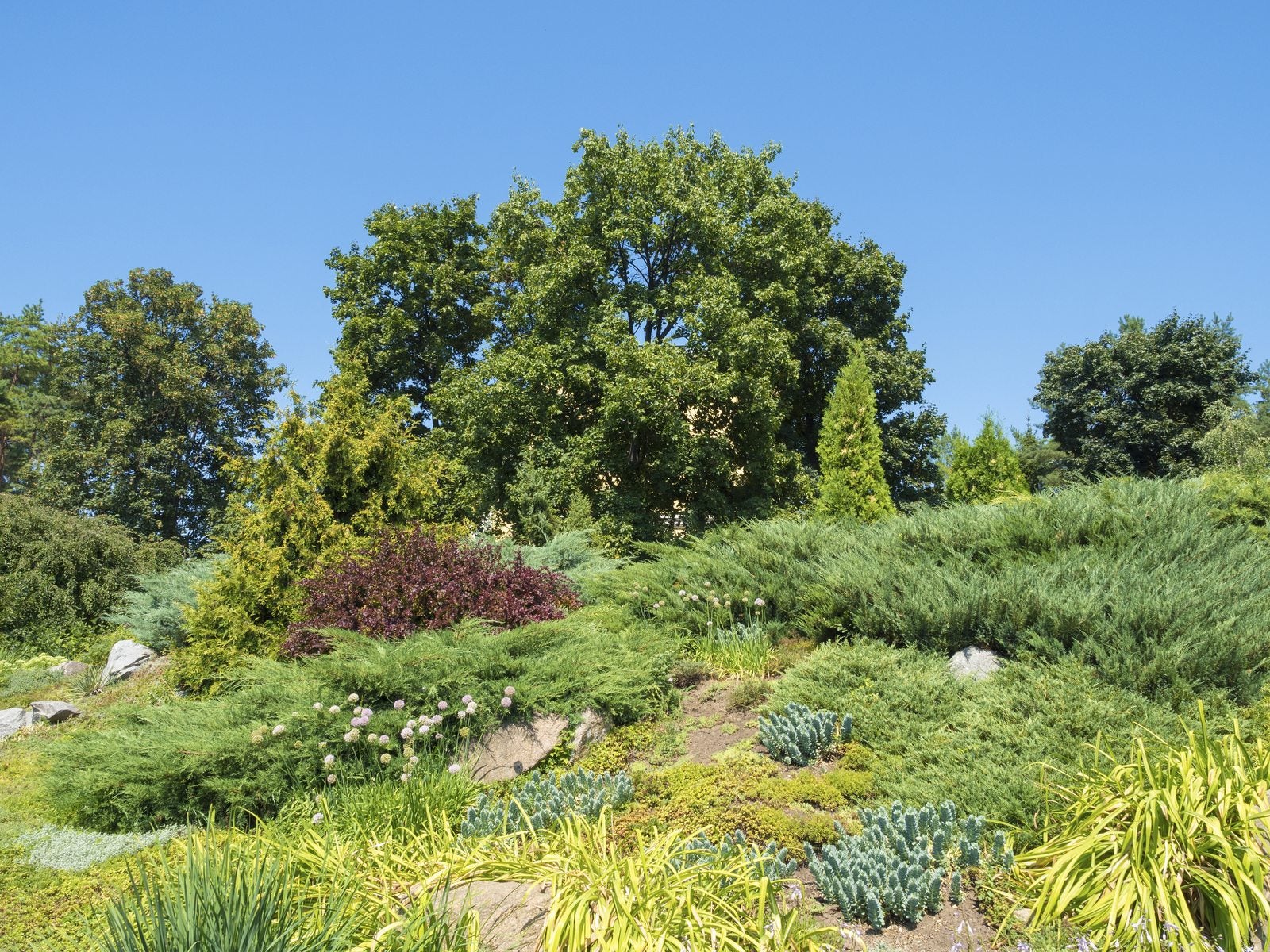Juniper Companion Plants: What To Plant Next To Junipers


Junipers are attractive evergreen ornamentals that produce edible berries, popular with humans as well as wildlife. You’ll find 170 species of juniper in commerce, with either needle-like or scale-like foliage. They offer a striking color range, from light to bottle green, silver-blue to dark blue, and yellow to gold. Want to know what to plant next to juniper? How about shrubs that would make good companion plants for juniper? Read on for information on plants that grow well with juniper.
Companion Plants for Juniper
Tall and tree like or short groundcover? Juniper varieties come in all shapes and sizes. Some are tall enough that they work well for privacy hedges, while others are perfect for foundation planting or covering that slope. For example, Red Cedar (Juniperus virginiana) presents as a pyramidal tree up to 50 feet (15 m.) tall. It can be a specimen tree in the backyard or part of a very tall windbreak. In contrast, certain cultivars of creeping junipers (Juniperus horizontalis) get no taller than 6 inches (15 cm.). Once you’ve selected your juniper plant, you’ll have to think about what to plant next to junipers. Plants that grow well with juniper—juniper plant companions—will have the same soil, sun, and irrigation requirements. Generally, juniper shrubs thrive with a full sun location. They also require soil with good drainage. Drought resistant, junipers withstand heat and dry periods much better than most ornamentals. The best juniper companion plants will have the same characteristics.
Plants that Grow Well with Juniper
What are good companion plants for juniper? That depends on the juniper you plant in your garden. If you have a juniper shrub with deep-blue needles like the dwarf conifer Juniperus squamata ‘Blue Star,’ for instance, then consider a golden dwarf conifer of another species. Chamaecyparis obtusa ‘Nana Lutea’ has the same requirements as the Blue Star juniper and adds light and color with its soft tufts of brilliant gold foliage. Any juniper with blue foliage also looks good near other blue-hued plants. Plants with blue flowers, berries, or leaves make good companion plants for juniper. When you are looking for juniper plant companions, think about bamboo. Bamboo species, particularly dwarf bamboo plants, are also good choices for juniper companion plants. Tall bamboo mixes well with tall junipers, while groundcover juniper blends seamlessly with dwarf bamboo. As previously stated, nearly any plant sharing similar growing conditions works well with juniper. Look for drought tolerant perennials with various bloom times to add sparks of color here and there for seasonal interest.
Sign up for the Gardening Know How newsletter today and receive a free copy of our e-book "How to Grow Delicious Tomatoes".

Teo Spengler is a master gardener and a docent at the San Francisco Botanical Garden, where she hosts public tours. She has studied horticulture and written about nature, trees, plants, and gardening for more than two decades, following a career as an attorney and legal writer. Her extended family includes some 30 houseplants and hundreds of outdoor plants, including 250 trees, which are her main passion. Spengler currently splits her life between San Francisco and the French Basque Country, though she was raised in Alaska, giving her experience of gardening in a range of climates.